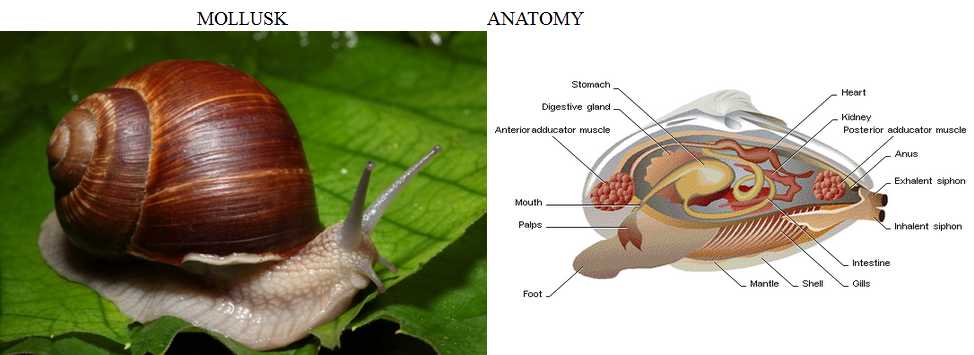149.WHAT IS A MOLLUSK?
“Mollusk” sounds like it ought to be the name of some prehistoric animal, but it isn’t. Mollusks are a huge division of animals without back-bones, and they range from snails to clams, and oysters to octopuses.
They differ in size from almost invisible creatures to giant squids 15 meters long! They may live in the tropics or in the arctic, in deep seas or on land!
But even though there are more than 60,000 different species of mollusks, they have certain characteristics in common. All mollusks, have soft, slimy, boneless bodies which are covered with big folds of flesh called “mant1es.” In many mollusks, this mantle is covered with a hard shell, such as that of the oyster, while others have no protecting shell at all. Almost all mollusks have a kind of “foot,” which is an extension of the mantle and which helps them move about. It may help them swim or walk, burrow in the mud, or tunnel through wood, depending on the species.
There are five groups of mollusks, and the members of three of them are very well known to everybody. The first of these common groups is called “Gastropoda,” which means “stomach feet.” Among the gastropods are snails, slugs, and periwinkles, all of which have one large “foot” on their stomachs. All gastropods have a head on which are eyes and feelers, and many of them carry single spiral shells on their backs.
The second common group of mollusks is the bivalve group. In this group you will find oysters, clams, mussels, scallops, and many others. All bivalves have shapeless bodies protected by double, hinged shells. All of them are water creatures.
The last common group of mollusks is called the “Cephalopoda,” which means “head-footed.” The members of this group have many arms, or tentacles, surrounding their mouths. This group includes the octopus, cuttlefish, squid, nautilus, and others. They are the aristocrats of the mollusk world, with a nervous system that raises them far above other mollusks.
All mollusks lay eggs, but some lay only a few and others, many. In some the young hatch out as larvae; in others, they are tiny reproductions of their parents.



Leave a Reply